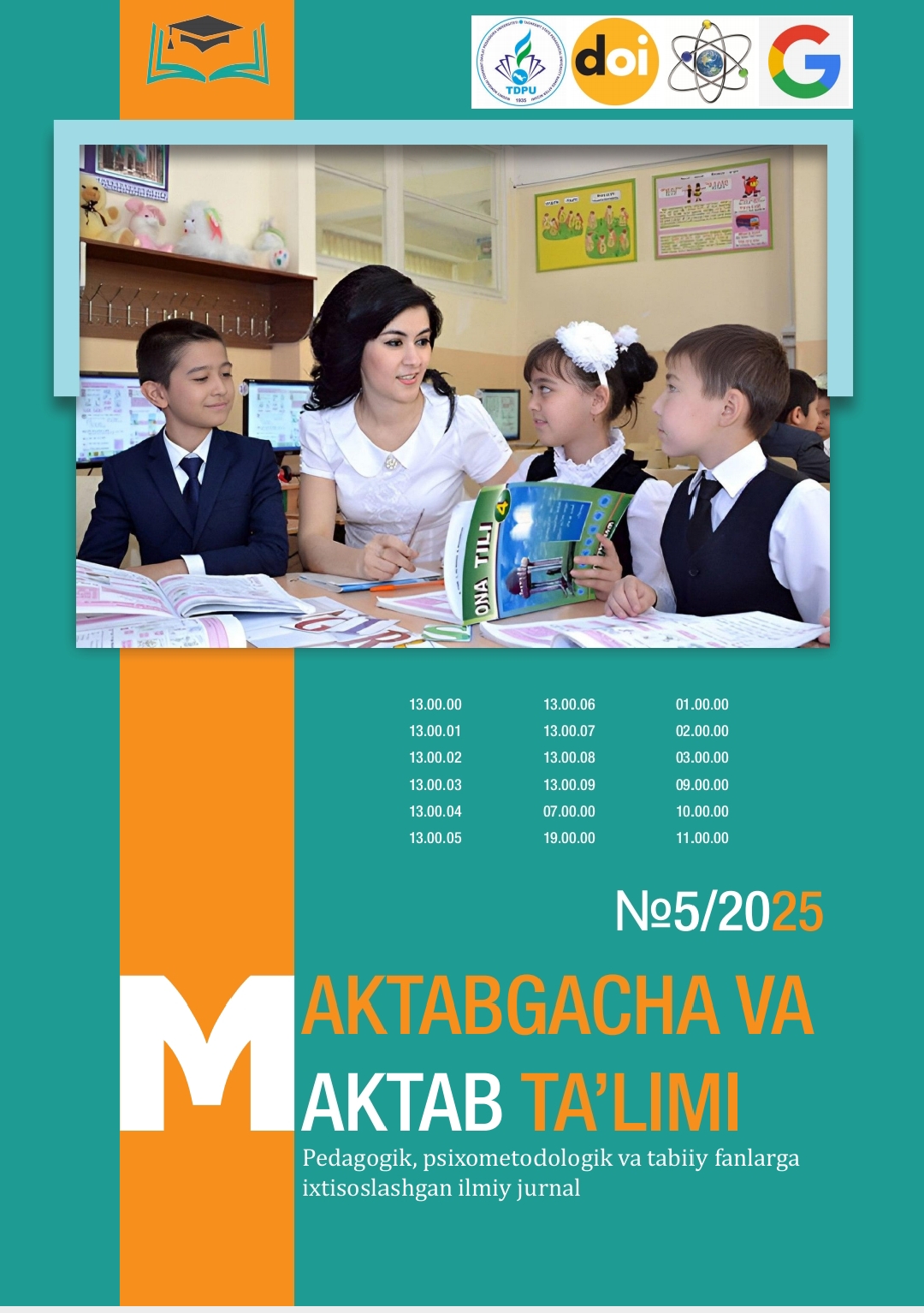The Importance of Modern Technologies For Improving Speech Skills of Primary Students
DOI:
https://doi.org/10.5281/zenodo.15482446Ключевые слова:
information technologies, infocommunication technologies, education, teaching, digital educational environment, speech skills.Аннотация
The article analyzes the issue of using information technologies to improve English-speaking skills in primary
school students, namely the concept, purpose, types and forms, directions, and prospects of their use. The study
describes the structure of the modern digital educational environment. It also identifies the capabilities of information and
educational technologies in the design and implementation of the educational process, the aspects of their integration at
the current stage of educational development, and their alignment with modern requirements. The authors of the study
emphasize the educational potential of information technologies.
Библиографические ссылки
Aksal, F. A. (2009). Action plan on communication practices: Roles of tutors at EMU Distance Education Institute to
overcome social barriers in constructing knowledge. The Turkish Online Journal of Educational Technology, 8(2),
–47.
Bialo, E. R., & Sivin-Kachala, J. (1996). The effectiveness of technology in schools: A summary of recent research.
School Library Media Quarterly, 25(1), 51–57.
Blachowicz, C., Bates, A., Berne, J., Bridgman, T., Chaney, J., & Perney, J. (2009). Technology and at-risk young
readers and their classrooms. Reading Psychology, 30(5), 387–411. https://doi.org/10.1080/02702710902733576
Carlson, S., & Firpo, J. (2001). Integrating computers into teaching: Findings from a 3-year program in 20 developing
countries.
C. C., & Ho, H. (2002). Exploring new literacies in online peer-learning environments. Reading Online, 6(1). Retrieved
September 10, 2012, from http://www.readingonline.org/newliteracies/lit_index.asp?HREF=choi/index.html
Fidaoui, D., Bahous, R., & Bacha, N. N. (2010). CALL in Lebanese elementary ESL writing classrooms. Computer
Assisted Language Learning, 23(2), 151–168. https://doi.org/10.1080/09588221003666248
Floyd, R. G., Keith, T. Z., Taub, G. E., & McGrew, K. S. (2007).
Horton, J., & Moorman, G. (2009). Teaching and reading the millennial generation through media literacy. Journal of
Adolescent and Adult Literacy, 52(6), 471–481.
Choi, I. (n.d.). In Vandervert, L. R., Shavinina, L. V., & Cornell, R. A. (Eds.), Cyber education: The future of distance
learning (pp. 85–114). Larchmont, NY: Mary Ann Liebert, Inc.
Iriskulov, A. T. va boshq. Kids English. Pupil’s Book. 2-sinf. Toshkent: O‘zbekiston.
Khodjayev, K. K. (2021). The specificity and complexity of the process of learning English. International Journal on
Orange Technologies, 3(6), 21–24.
Skehan, P. (1998). A Cognitive Approach to Language Learning. Oxford University Press.
Swain, M., & Lapkin, S. (2001). Focus on form through collaborative dialogue: Exploring second language learners’
retention of language-related episodes. Studies in Second Language Acquisition, 23(3), 381–409.
Thornbury, S. (2005). How to Teach Speaking. Pearson Education.
Ur, P. (2012). A Course in Language Teaching: Practice and Theory. Cambridge University Press.
Willis, J. (1996). A Framework for Task-Based Learning. Longman.
Ziyonet.uz – http://www.ziyonet.uz
Zayniddinovna, T. G., & Khasanovna, N. M. (2023). Game technologies in teaching. Galaxy International Interdisciplinary
Research Journal, 11(6), 384–386.
Загрузки
Опубликован
Выпуск
Раздел
Лицензия
Copyright (c) 2025 MAKTABGACHA VA MAKTAB TA’LIMI JURNALI

Это произведение доступно по лицензии Creative Commons «Attribution» («Атрибуция») 4.0 Всемирная.

